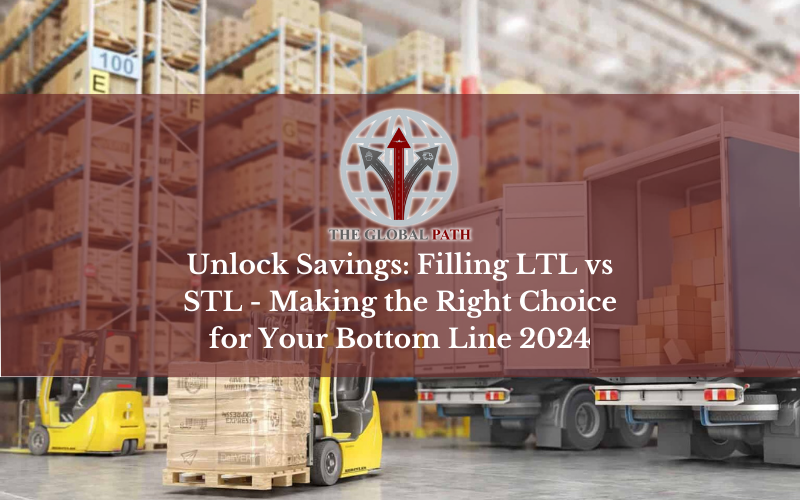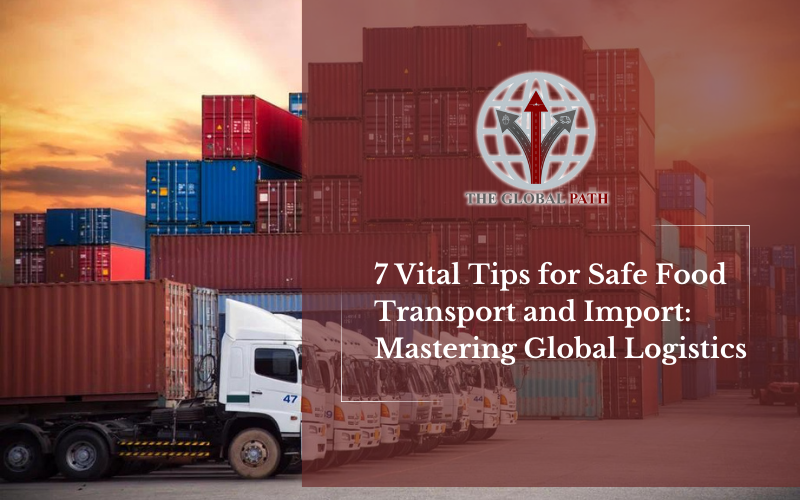International trade is a world in itself. It is a multidimensional game. Its allure of lucrative deals and expansive market reach attracts entrepreneurs to explore the import-export domain. But as we know, it comes at the expense of intelligent research and a keen understanding of the industry and its volatility. Frankly speaking, the import-export industry is volatile. And it doesn’t matter if you’re a seasoned professional or a newcomer. Grasping the nuances of customs regulations, supply chain logistics, and market trends is the only door to success, and there are no shortcuts.
This blog can be your guide to get into the complexities of import and export. I will try my level best to strip away the complexities and offer practical insights tailored to the needs of a complex and dynamic industry. From demystifying trade barriers to elucidating negotiation tactics, I aim to empower aspiring import-export entrepreneurs with actionable knowledge. Moreover, I recognize the significance of cultural sensitivity and effective communication in building enduring business relationships across borders. These are simple yet golden principles you can follow to success. Suppose I elaborate further, keeping a keen eye on emerging trends such as e-commerce integration and sustainability practices. In that case, you can position yourself for success in today’s global marketplace and become unstoppable.
What is an Import Export Business?
Before starting with the guide, let me reintroduce my readers to imports and exports. Many of you have heard that imports and exports are the business of bringing goods to the country and sending them to other countries. But let me correct you here on import and export: it’s about the goods and the services you provide. Let’s understand it with an example: You are a graphic designer and get an order from another country. What are you doing? You are exporting your services, and vice versa goes for importing.
Pro Tips to Start Trade Business:
1. Starting Your Export and Import Business:
Creating an Identity Determining the distinct identity of an import-export business is the first step towards establishing it. It takes more than just a memorable name or eye-catching logo to build a brand that appeals to global stakeholders and stands out from the competition.
Partnership vs. Sole Proprietorship: Select carefully which import-export business model to use. Whereas operating as a sole proprietor grants you complete control, a partnership divides up the duties and facilitates easier management and scaling.
2. Managing Regulatory Compliances:
The global market is not a playground at free. It is constrained by laws and requirements, which differ between nations. It’s non-negotiable to be compliant, from obtaining licenses such as GST and VAT to making sure you’re not breaking any international trade laws.
Knowing Tariffs and Duties: The destination country may impose tariffs or duties on any product that you import or export. It’s critical to comprehend these fees since they have an immediate bearing on the cost and profitability of your products.
3. The components of Finance:
Creating a Current Account: This goes beyond simple etiquette. It is your entry point for managing the money associated with your import-export business and handling transactions across international borders.
Comprehending Forex: It’s essential to have a fundamental understanding of foreign exchange rates and their fluctuations because you’ll be working with multiple currencies. Collaborating with a reputable bank or forex advisor can be advantageous.
Keeping the Import Export Code (IEC) in check:
The Reason for IEC: Entering the foreign market is impossible without it. This code attests to the legitimacy of your import-export company in the context of global trade.
Acquisition Process: The approval may require an extensive knowledge of the Import Export Business, its goals, and its potential impact on both domestic and international markets, even though the IEC only requires standard documentation.
5. Research is Crucial
Examination of the Market: Perform comprehensive market research prior to importing or exporting any products. Determine possible markets, comprehend consumer behaviour, examine rivals, and evaluate obstacles to market entry.
Product Viability: Not all markets are suited for all products. The demand and acceptability of a product can be impacted by cultural quirks, economic considerations, and regional laws.
6. Developing Relationships:
Trade shows and exhibits are fantastic venues for networking. They serve as a platform for meeting possible customers and partners, offer insights into market developments, and expose consumers to new products.
Leveraging Digital Platforms: Importers and exporters can now conduct smooth import-export business transactions thanks to platforms like Alibaba, TradeIndia, and others that link them.
7. Risk Management:
Comprehending Global Hazards: International trade carries a number of risks, including trade embargoes, currency fluctuations, and geopolitical instability. Planning ahead and having backup plans are crucial.
Insurance: You might want to insure your shipments. This acts as a shield against unanticipated losses or damages.
8. Training and Improvement:
Ongoing Education: Sign up for classes, go to workshops, or even earn certifications.
The import-export industry is always changing, so being current is essential to being in business for a long time.
9. Ethics & Sustainability:
Eco-friendly Trade: Take into account how environmentally friendly your import-export business practices are as the world moves towards sustainability.
This can be a differentiator in addition to lessening the impact on the environment.
10. Labelling and Packaging:
The packaging plays a crucial role in international product shipping; it’s not just about appearance. By ensuring product safety during transportation, it lowers the possibility of damage.
Labelling Requirements: Labelling regulations differ between nations. These labels frequently include details about the product, where it came from, safety precautions, etc. – – – Labelling correctly can help prevent delays at customs and legal issues.
How to Launch an Import-Export Company?
Getting Around Customs:
Recognizing Your Responsibilities It’s critical to familiarize yourself with the target country’s customs charges and tariffs for your product. These may have a big impact on the final product’s cost.
Documentation: Bills of shipment, business invoices, certificates of origin, and other documents are needed by customs. Make sure all of your documentation is flawless to prevent needless delays.
Cultural Nuances:
Making educated decisions about import-export business can be facilitated by having a thorough understanding of cultural nuances. For example, cultural differences may mean that a product that is well-liked in one nation does not work well in another.
Language Disparities: Understanding the local language of the nation you’re doing business with is advantageous, as is hiring someone who does, particularly when it comes to relationship- and negotiation-building.
Assessing Approaches to Entering the Market:
Exporting directly: This entails selling to a target country buyer directly. Even though it’s straightforward, it has its own special difficulties.
Partnering with Distributors/Agents: They can take care of distribution, sales, and post-purchase support for you. As the public face of your product abroad, pick your partners carefully.
Joint Ventures: Partnering with a local business can occasionally give you access to regional assets, distribution options, and a deeper comprehension of the market.
Online Presence and Digital Marketing:
Web page: A business without a website in the modern digital era loses out on a lot of opportunities. Ensure that your website offers comprehensive information about your offerings in multiple languages.
Social Media: Make Use of Social Media Utilize social media sites like Facebook, Instagram, and LinkedIn to network with possible partners and customers and to advertise your products.
Managing Foreign Payments:
Terms of Payment: Recognize and specify the terms of payment. These can include open accounts, letters of credit, and advance payments; each has advantages and disadvantages of its own.
Currency Exchange: Changes in exchange rates can have a big effect on a deal’s profitability. To protect against sharp swings, think about hedging options.
After-sale Support and Services:
Client Support: Offering excellent customer support can help you stand out from the competitors. This support may include troubleshooting, training, or assistance with product installation.
Comments and Continued Improvement: Continue to solicit feedback from your international clientele. Make use of these insights to improve your product and address needs unique to your region.
Conclusions:
Putting all the above discussion in a nut shell, starting an import export business is not everyone’s piece of cake it needs careful planning and understanding of how things work internationally. In this blog I have tried to make things simpler for you, giving practical tips on how to start and run your business smoothly. From figuring out your business identity to following rules and regulations, each step is carries its own importance.
Remember, it’s not just about making deals; it’s about building trust and doing things right. Being ethical, thinking about the environment, and respecting different cultures are also important.
To take your business to a new level, you can use online tools like websites and social media(the most powerful tool of today’s time). At the same time, you need to take care of other important factors, such as managing risks and always looking for ways to improve. This will help your business stand out in the international market.
So, as you take on this adventure, keep learning, stay curious, and strive to make a positive impact.










